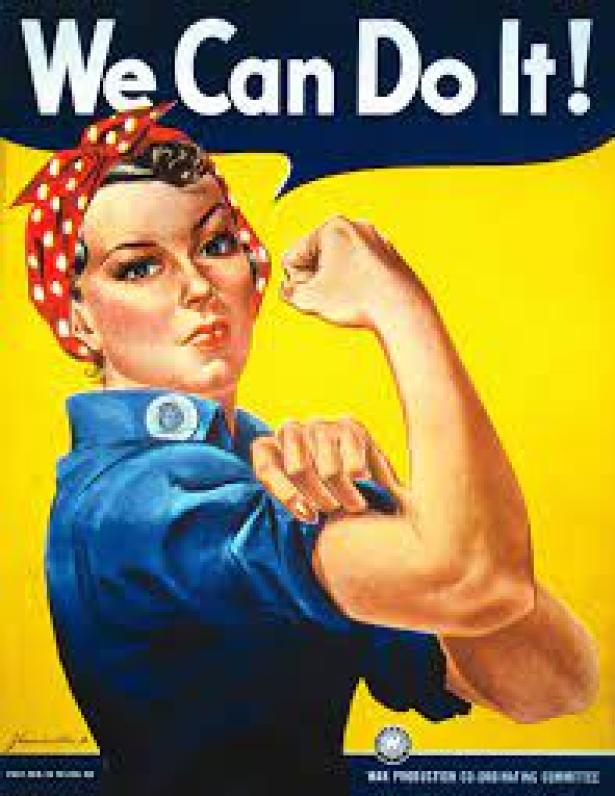Happy Friday Rulers! I’m Emma and I’m thrilled to be your host for this week’s edition of Women Rule. My favorite thing about myself is that I’m a twin! My twin sister, Alba, lives in Madrid. I’m a D.C. native, but I live in Brooklyn now, just a few steps away from the best dog-watching park in the city (Fort Greene). Let’s get into it!
Across the country, labor is having a moment: Historic United Auto Workers wins (and some losses) in the union-resistant South, Amazon factory organizing, Hollywood’s SAG-AFTRA strike and Starbucks workers’ union fight have dominated headlines this year.
“I am riding that wave and loving every minute of it,” Liz Shuler, president of the AFL-CIO, the nation’s largest federation of union workers, tells Women Rule.
As waves of labor activism sweep the country, women of color are leading union growth, while union women in construction and manufacturing are raising labor and safety standards for all workers. Within unions — spaces once largely dominated by white men — leaders say they are pushing women of all races and men of color to take on leadership roles and incentivizing women to join previously male-dominated industries.
Contrary to the stereotype of the flannel-wearing, work-boot-stomping union guy, Shuler, says “the reality is the labor movement is the largest organization of working women in the country. We represent 6.5 million women — so we are a women’s movement.”
Thanks to the advent of new technology — more automation, less heavy lifting — and federal investments in developing infrastructure, male-dominated trades like construction and manufacturing are creating new opportunities for women, according to Shuler.
“My mission in life is to make sure that all these jobs that are going to be a pathway to the middle class are open, available and attractive for women,” Shuler says of the new federally-funded manufacturing jobs.
As an example, Shuler points to the Building Trades Union’s efforts to recruit women for construction work at semiconductor plants being built through the CHIPS and Science Act.
“Women can write their ticket in the construction trades right now because we are determined to move the needle for women in construction,” Shuler says.
The construction industry’s efforts to recruit women in recent years has raised labor standards for all workers, according to Melissa Wells, who works to diversify the construction workforce for North America’s Building Trades Unions.
Standards that should’ve existed years ago when men dominated the industry, like providing customized PPE, establishing heavy lifting safety measures and offering childcare stipends, are now being implemented. And that, she says, is largely because women are joining the industry.
“Continuing to focus on health and safety is a way to bring in more women, but to also bring in more young men,” Wells says.
Still, gaps persist, particularly within union leadership. Women make up only 19.1 percentof the AFL-CIO’s executive council, despite making up almost half, 46.8 percent, of the unionized workforce in the U.S.
“We do still have a pipeline problem,” Shuler says. “There is still sort of an old boy’s network. Sometimes you are the only woman in the room.”
Virginia Rodino, executive director of the Coalition of Labor Union Women, tells Women Rule that the coalition has been working to incentivize members of underrepresented groups to run for office within their unions, as their membership grew post-pandemic.
The pandemic itself played a role in boosting union numbers among women of color, according to Rudino. Many were essential workers toiling to keep the country running during lockdown, often in extremely dangerous environments, like hospitals. People were dying on the job — driving home for them the importance of union labor protection, Rudino says.
“We as a society started seeing previously invisible workers as actually essential, who were largely women of color,” Rudino says. During that time, she says, “there was enormous organizing that happened. It’s people themselves who are recognizing their own strength.”
In particular, union women are flexing their power with political campaigning and grassroots organizing. With 6.6 million women enrolled in unions, they’re a potent voting bloc that politicians make a point of wooing — and union women know that.
“They’re captains of the phone banks, they’re marshaling our forces to do the door-knocks and the canvases out in the communities,” Shuler says.
As the first woman to ever lead the AFL-CIO, Shuler says she knows intimately how important it is for women to take on leadership roles in the labor movement.
“I never aspired to be a leader,” Shuler says, “and I think a lot of women are that way.” But she’s convinced that as they see more union women in leadership positions, they’ll be inspired to join, too. It “gives women more confidence to say, ‘Hey, I can totally do that.’”


Spread the word